| Class 1 Class 1 U.S. senators belong to the electoral cycle that has recently been contested in 2006, 2012, 2018, and 2024. The next election will be in 2030. | C | Class 2 Class 2 U.S. senators belong to the electoral cycle that has recently been contested in 2008, 2010 (special election), 2014, and 2020. The next election will be in 2026. |
|---|
| # | Senator | Party | Dates in office | Electoral history | T | T | Electoral history | Dates in office | Party | Senator | # |
|---|
| 1 | 
George Read | Pro-
Admin. | Mar 4, 1789 –
Sep 18, 1793 | Elected in 1788. | 1 | 1st | 1 | Elected in 1788. | Mar 4, 1789 –
Mar 3, 1793 | Anti-
Admin. | 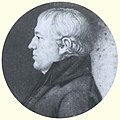
Richard Bassett | 1 |
|---|
| Re-elected in 1790.Resigned to become Chief Justice of Delaware. | 2 | 2nd | Pro-
Admin. |
| 3rd | 2 | Elected in 1793.Resigned. | Mar 4, 1793 –
Jan 19, 1798 | Pro-Admin. | 
John Vining | 2 |
|---|
| Vacant | Sep 18, 1793 –
Feb 7, 1795 | |
| 2 | 
Henry Latimer | Pro-
Admin. | Feb 7, 1795 –
Feb 28, 1801 | Elected in 1795 to finish Read's term. |
|---|
| Federalist | 4th | Federalist |
| Re-elected in 1797.Resigned. | 3 | 5th |
| Elected in 1798 to finish Vining's term.Died. | Jan 19, 1798 –
Aug 11, 1798 | Federalist | 
Joshua Clayton | 3 |
|---|
| | Aug 11, 1798 –
Jan 17, 1799 | Vacant |
| Elected in 1799 to finish Clayton's term. | Jan 17, 1799 –
Nov 6, 1804 | Federalist | 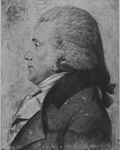
William H. Wells | 4 |
|---|
| 6th | 3 | Re-elected in 1799.Resigned. |
| 3 | 
Samuel White | Federalist | Feb 28, 1801 –
Nov 4, 1809 | Appointed to finish Latimer's term. |
|---|
| 7th |
| Re-elected in 1803. [1] | 4 | 8th |
| | Nov 6, 1804 –
Nov 13, 1804 | Vacant |
| Elected in 1804 to finish Wells's term. | Nov 13, 1804 –
Mar 3, 1813 | Federalist | 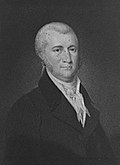
James A. Bayard | 5 |
|---|
| 9th | 4 | Re-elected in 1805. |
| 10th |
| Re-elected in 1809. [2] Died. | 5 | 11th |
| Vacant | Nov 4, 1809 –
Jan 12, 1810 | |
| 4 | Outerbridge Horsey | Federalist | Jan 12, 1810 –
Mar 3, 1821 | Elected in 1810 to finish White's term. |
|---|
| 12th | 5 | Re-elected in 1811.Resigned. |
| 13th | | Mar 3, 1813 –
May 21, 1813 | Vacant |
| Elected in 1813 to finish Bayard's term.Retired. | May 21, 1813 –
Mar 3, 1817 | Federalist | 
William H. Wells | 6 |
|---|
| Re-elected in 1815. [3] Retired. | 6 | 14th |
| 15th | 6 | Elected in 1817.Legislature failed to elect. | Mar 4, 1817 –
Mar 3, 1823 | Federalist | 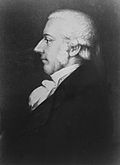
Nicholas Van Dyke | 7 |
|---|
| 16th |
| Vacant | Mar 4, 1821 –
Jan 23, 1822 | | 7 | 17th |
| 5 | 
Caesar A. Rodney | Democratic-
Republican | Jan 24, 1822 –
Jan 29, 1823 | Elected late to finish vacant term.Resigned to become U.S. Minister to the United Provinces of the River Plate. |
|---|
| Vacant | Jan 29, 1823 –
Jan 8, 1824 | |
| 18th | 7 | | Mar 4, 1823 –
Jan 8, 1824 | Vacant |
| Re-elected late.Died. | Jan 8, 1824 –
May 21, 1826 | Federalist | 
Nicholas Van Dyke |
| 6 | 
Thomas Clayton | Federalist | Jan 8, 1824 –
Mar 3, 1827 | Elected in 1824 to finish Rodney's term. |
|---|
National
Republican | 19th | National
Republican |
| | May 21, 1826 –
Nov 8, 1826 | Vacant |
| Appointed to continue Van Dyke's term.Retired. | Nov 8, 1826 –
Jan 12, 1827 | National
Republican | 
Daniel Rodney | 8 |
|---|
| Elected in 1827 to finish Van Dyke's term.Retired. | Jan 12, 1827 –
Mar 3, 1829 | Jacksonian | 
Henry M. Ridgely | 9 |
|---|
| 7 | 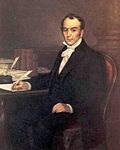
Louis McLane | Jacksonian | Mar 4, 1827 –
Apr 16, 1829 | Elected in 1827.Resigned to become U.S. Envoy Extraordinary and Minister Plenipotentiary to England. | 8 | 20th |
|---|
| 21st | 8 | Elected in 1829. | Mar 4, 1829 –
Dec 29, 1836 | National
Republican | 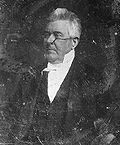
John M. Clayton | 10 |
|---|
| Vacant | Apr 16, 1829 –
Jan 7, 1830 | |
| 8 | 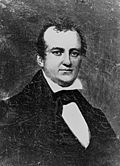
Arnold Naudain | National
Republican | Jan 7, 1830 –
Jun 16, 1836 | Elected in 1830 to finish McLane's term. |
|---|
| 22nd |
| Re-elected in 1832.Resigned. | 9 | 23rd |
| 24th | 9 | Re-elected in 1835.Resigned. |
| 9 | 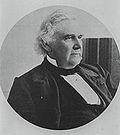
Richard H. Bayard | National
Republican | Jun 17, 1836 –
Sep 19, 1839 | Elected in 1836 to finish Naudain's term. |
|---|
| | Dec 29, 1836 –
Jan 9, 1837 | Vacant |
| Elected in 1837 to finish his cousin's term. | Jan 9, 1837 –
Mar 3, 1847 | National
Republican | 
Thomas Clayton | 11 |
|---|
| Whig | 25th | Whig |
| Re-elected during the 1838/39 cycle.Resigned to become Chief Justice of Delaware. | 10 | 26th |
| Vacant | Sep 19, 1839 –
Jan 11, 1841 | |

Richard H. Bayard | Whig | Jan 12, 1841 –
Mar 3, 1845 | Elected in 1841 to finish his own term.Retired. |
| 27th | 10 | Re-elected in 1841. |
| 28th |
| 10 | 
John M. Clayton | Whig | Mar 4, 1845 –
Feb 23, 1849 | Elected in 1845.Resigned to become U.S. Secretary of State. | 11 | 29th |
|---|
| 30th | 11 | Elected in 1846 or 1847.Retired. | Mar 4, 1847 –
Mar 3, 1853 | Whig | 
Presley Spruance | 12 |
|---|
| 11 | 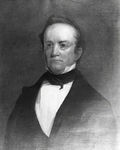
John Wales | Whig | Feb 23, 1849 –
Mar 3, 1851 | Elected in 1849 to finish Clayton's term.Lost re-election. |
|---|
| 31st |
| 12 | 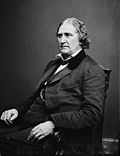
James A. Bayard Jr. | Democratic | Mar 4, 1851 –
Jan 29, 1864 | Elected in 1851. | 12 | 32nd |
|---|
| 33rd | 12 | Elected in 1853.Died. | Mar 4, 1853 –
Nov 9, 1856 | Whig | 
John M. Clayton | 13 |
|---|
| 34th |
| | Nov 9, 1856 –
Nov 19, 1856 | Vacant |
| Appointed to continue Clayton's term.Declined nomination to finish Clayton's term. | Nov 19, 1856 –
Jan 14, 1857 | Whig | 
Joseph P. Comegys | 14 |
|---|
| Elected in 1857 to finish Clayton's term.Lost re-election. | Jan 14, 1857 –
Mar 3, 1859 | Democratic | 
Martin W. Bates | 15 |
|---|
| Re-elected in 1857. | 13 | 35th |
| 36th | 13 | Elected in 1858. | Mar 4, 1859 –
Mar 3, 1871 | Democratic | 
Willard Saulsbury Sr. | 16 |
|---|
| 37th |
| Re-elected in 1863.Resigned. | 14 | 38th |
| 13 | 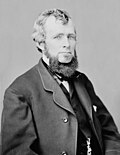
George R. Riddle | Democratic | Jan 29, 1864 –
Mar 28, 1867 | Elected in 1864 to finish Bayard's term.Died. |
|---|
| 39th | 14 | Re-elected in 1864.Lost re-election. |
| 40th |
| Vacant | Mar 29, 1867 –
Apr 5, 1867 | |
| 14 | 
James A. Bayard Jr. | Democratic | Apr 5, 1867 –
Mar 3, 1869 | Appointed to continue his own term. Elected in 1869 to finish his own term. [4] Retired. |
|---|
| 15 | 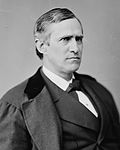
Thomas F. Bayard | Democratic | Mar 4, 1869 –
Mar 6, 1885 | Elected in 1869. | 15 | 41st |
|---|
| 42nd | 15 | Elected in 1870. | Mar 4, 1871 –
Mar 3, 1889 | Democratic | 
Eli Saulsbury | 17 |
|---|
| 43rd |
| Re-elected in 1875. | 16 | 44th |
| 45th | 16 | Re-elected in 1876. |
| 46th |
| Re-elected in 1881.Resigned to become U.S. Secretary of State. | 17 | 47th |
| 48th | 17 | Re-elected in 1883.Lost re-election. |
| 49th |
| Vacant | Mar 6, 1885 –
Mar 18, 1885 | |
| 16 | 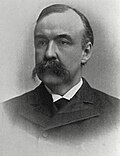
George Gray | Democratic | Mar 18, 1885 –
Mar 3, 1899 | Elected in 1885 to finish Bayard's term. |
|---|
| Re-elected in 1887. | 18 | 50th |
| 51st | 18 | Election year unknown.Lost re-election. | Mar 4, 1889 –
Mar 3, 1895 | Republican | 
Anthony Higgins | 18 |
|---|
| 52nd |
| Re-elected in 1893.Lost re-election. | 19 | 53rd |
| 54th | 19 | Legislature failed to elect. | Mar 4, 1895 –
Jan 19, 1897 | Vacant |
| Elected in 1897 to finish vacant term.Lost re-election. | Jan 19, 1897 –
Mar 3, 1901 | Democratic | 
Richard R. Kenney | 19 |
|---|
| 55th |
| Vacant | Mar 4, 1899 –
Mar 1, 1903 | Legislature failed to elect. | 20 | 56th |
| 57th | 20 | Legislature failed to elect. | Mar 4, 1901 –
Mar 2, 1903 | Vacant |
| 17 | 
L. Heisler Ball | Republican | Mar 2, 1903 –
Mar 3, 1905 | Elected in 1903 to finish vacant term. | Elected in 1903 to finish vacant term.Retired. | Mar 2, 1903 –
Mar 3, 1907 | Republican | 
J. Frank Allee | 20 |
|---|
| 58th |
| Vacant | Mar 4, 1905 –
Jun 12, 1906 | Legislature failed to elect. | 21 | 59th |
| 18 | 
Henry A. du Pont | Republican | Jun 13, 1906 –
Mar 3, 1917 | Elected in 1906 to finish vacant term. |
|---|
| 60th | 21 | Elected in 1907. [5] Retired. | Mar 4, 1907 –
Mar 3, 1913 | Republican | 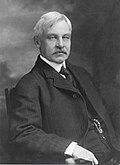
Harry A. Richardson | 21 |
|---|
| 61st |
| Re-elected in 1911.Lost re-election. | 22 | 62nd |
| 63rd | 22 | Elected in 1913.Lost re-election. | Mar 4, 1913 –
Mar 3, 1919 | Democratic | 
Willard Saulsbury Jr. | 22 |
|---|
| 64th |
| 19 | 
Josiah O. Wolcott | Democratic | Mar 4, 1917 –
Jul 2, 1921 | Elected in 1916.
Resigned to become Chancellor of Delaware. | 23 | 65th |
|---|
| 66th | 23 | Elected in 1918.Lost renomination. | Mar 4, 1919 –
Mar 3, 1925 | Republican | 
L. Heisler Ball | 23 |
|---|
| 67th |
| 20 | 
T. Coleman du Pont | Republican | Jul 7, 1921 –
Nov 6, 1922 | Appointed to finish Wolcott's term.Lost election to finish Wolcott's term. |
|---|
| 21 | 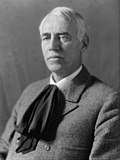
Thomas F. Bayard Jr. | Democratic | Nov 7, 1922 –
Mar 3, 1929 | Elected in 1922 to finish Wolcott's term. |
|---|
| Elected in 1922.Lost re-election. | 24 | 68th |
| 69th | 24 | Elected in 1924.Resigned. | Mar 4, 1925 –
Dec 8, 1928 | Republican | 
T. Coleman du Pont | 24 |
|---|
| 70th |
| | Dec 8, 1928 –
Dec 10, 1928 | Vacant |
| Appointed to finish du Pont's term. Elected in 1930 to finish du Pont's term. | Dec 10, 1928 –
Jan 3, 1937 | Republican | 
Daniel O. Hastings | 25 |
|---|
| 22 | 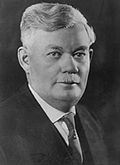
John G. Townsend Jr. | Republican | Mar 4, 1929 –
Jan 3, 1941 | Elected in 1928. | 25 | 71st |
|---|
| 72nd | 25 | Elected in 1930.Lost re-election. |
| 73rd |
| Re-elected in 1934.Lost re-election. | 26 | 74th |
| 75th | 26 | Elected in 1936.Lost renomination. | Jan 3, 1937 –
Jan 3, 1943 | Democratic | 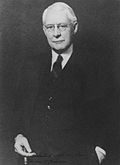
James H. Hughes | 26 |
|---|
| 76th |
| 23 | 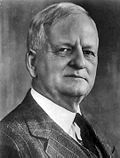
James M. Tunnell | Democratic | Jan 3, 1941 –
Jan 3, 1947 | Elected in 1940.Lost re-election. | 27 | 77th |
|---|
| 78th | 27 | Elected in 1942.Lost re-election. | Jan 3, 1943 –
Jan 3, 1949 | Republican | 
C. Douglass Buck | 27 |
|---|
| 79th |
| 24 | 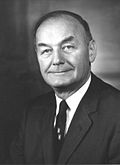
John J. Williams | Republican | Jan 3, 1947 –
Dec 31, 1970 | Elected in 1946. | 28 | 80th |
|---|
| 81st | 28 | Elected in 1948. | Jan 3, 1949 –
Jan 3, 1961 | Democratic | 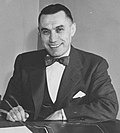
J. Allen Frear Jr. | 28 |
|---|
| 82nd |
| Re-elected in 1952. | 29 | 83rd |
| 84th | 29 | Re-elected in 1954.Lost re-election. |
| 85th |
| Re-elected in 1958. | 30 | 86th |
| 87th | 30 | Elected in 1960. | Jan 3, 1961 –
Jan 3, 1973 | Republican | 
J. Caleb Boggs | 29 |
|---|
| 88th |
| Re-elected in 1964.Retired and resigned to give his successor preferential seniority. | 31 | 89th |
| 90th | 31 | Re-elected in 1966.Lost re-election. |
| 91st |
| 25 | 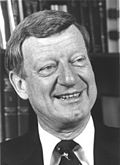
William Roth | Republican | Jan 1, 1971 –
Jan 3, 2001 | Appointed to finish Williams's term, having been elected to the next term. |
|---|
| Elected in 1970. | 32 | 92nd |
| 93rd | 32 | Elected in 1972. | Jan 3, 1973 –
Jan 15, 2009 | Democratic | 
Joe Biden | 30 |
|---|
| 94th |
| Re-elected in 1976. | 33 | 95th |
| 96th | 33 | Re-elected in 1978. |
| 97th |
| Re-elected in 1982. | 34 | 98th |
| 99th | 34 | Re-elected in 1984. |
| 100th |
| Re-elected in 1988. | 35 | 101st |
| 102nd | 35 | Re-elected in 1990. |
| 103rd |
| Re-elected in 1994.Lost re-election. | 36 | 104th |
| 105th | 36 | Re-elected in 1996. |
| 106th |
| 26 | 
Tom Carper | Democratic | Jan 3, 2001 –
Jan 3, 2025 | Elected in 2000. | 37 | 107th |
|---|
| 108th | 37 | Re-elected in 2002. |
| 109th |
| Re-elected in 2006. | 38 | 110th |
| 111th | 38 | Re-elected in 2008.Resigned to become U.S. Vice President. |
| Appointed to continue Biden's term.Retired when his successor was elected. | Jan 15, 2009 [6] –
Nov 15, 2010 | Democratic | 
Ted Kaufman | 31 |
|---|
| Elected in 2010 to finish Biden's term. | Nov 15, 2010 –
present | Democratic | 
Chris Coons | 32 |
|---|
| 112th |
| Re-elected in 2012. | 39 | 113th |
| 114th | 39 | Re-elected in 2014. |
| 115th |
| Re-elected in 2018.Retired. | 40 | 116th |
| 117th | 40 | Re-elected in 2020. |
| 118th |
| 27 | 
Lisa Blunt Rochester | Democratic | Jan 3, 2025 –
present | Elected in 2024. | 41 | 119th |
|---|
| 120th | 41 | To be determined in the 2026 election. |
| 121st |
| # | Senator | Party | Years in office | Electoral history | T | C | T | Electoral history | Years in office | Party | Senator | # |
|---|
| Class 1 | Class 2 |
|---|






















































